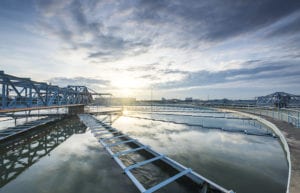In my previous blog (Part 1) I introduced the energy paradox which cites world energy use as having increased by 50% over the last 25 years, and yet there are two million people on our planet that still lack access to reliable electricity. The other part of the equation is that energy demand will increase by almost another 50% by 2050[1].
As a planet, we are consuming more and we need to reduce our waste, recycle, and both decrease our carbon intensity and improve our efficiency by a factor of three to avoid significant and irreversible damage to our planet. When you look at it this way, you get more than a paradox but an urgent call to action.
We already looked at ways to make your industrial operations more sustainable, and now I’d like to look wider across the business at strategies to save energy and to consume it smarter.
Optimized supply chains improve sustainability
Improving production by location and, thereby, reducing transportation is another way to “produce better” and improve the sustainability of your business. The automation of low value-added skills in conjunction with the upskilling of plant personnel and operators across all geographies and economies heralds a new vision for an industrial world where producing on the other side of the planet in order to reduce labor costs is no longer as viable as it once was. Driven by neo-protectionist and “hipster” trends of producing and consuming locally, industries that can embrace this idea will reduce the footprint of their intercontinental supply chain (and potentially appeal to a broader market, as a result).
Sustainable customization
One of the drivers of the digitization of industries is the increasing consumer demand for customized goods. Delivering mass customization, or “lot sizes of one,” becomes much more viable thanks to the increased flexibility of digitized processes and technologies like 3D printing. Add to this a complete set of analytics to optimize planning and scheduling and you gain a high level of flexibility and agility to deliver on a rising consumer demand for goods that are designed and manufactured sustainably with limited waste.
Producing, consuming, storing, and selling your own electricity
Decentralized energy usage is another option that industrial producers can consider in order to be autonomous when the prices of different types of energy (oil, gas, or coal) reach pitch. The idea is to have access to alternative energy sources and reduce CO2 emissions. The implementation of a micro grid for industrial sectors proposes that industrial companies be aware of their global energy consumption and select the energy type they need. Playing an active role in the demand response of energy will make energy usage more efficient, and not just for building use or replacement on the grid, but also for capacity planning and to ensure a continuous, reliable energy supply.
As I mentioned at the end of the last blog, industry and sustainability are no longer mutually exclusive. Industrial producers now have tools at their disposal to help them make “sustainability decisions” without compromising their businesses. In fact, in many instances, sustainability actions, which are good for our planet, can also bring with them new business opportunities and attract new consumers who share this value. It’s a shift that may take some time and effort at the start, but the payback will come on multiple levels.
To find out more about sustainability at Schneider Electric, click here
To learn more about our industrial automation solutions, click here
[1] McKinsey Energy Outlook, 2016; IEA WEO 2016, Current Policy Scenario (Business as Usual)



